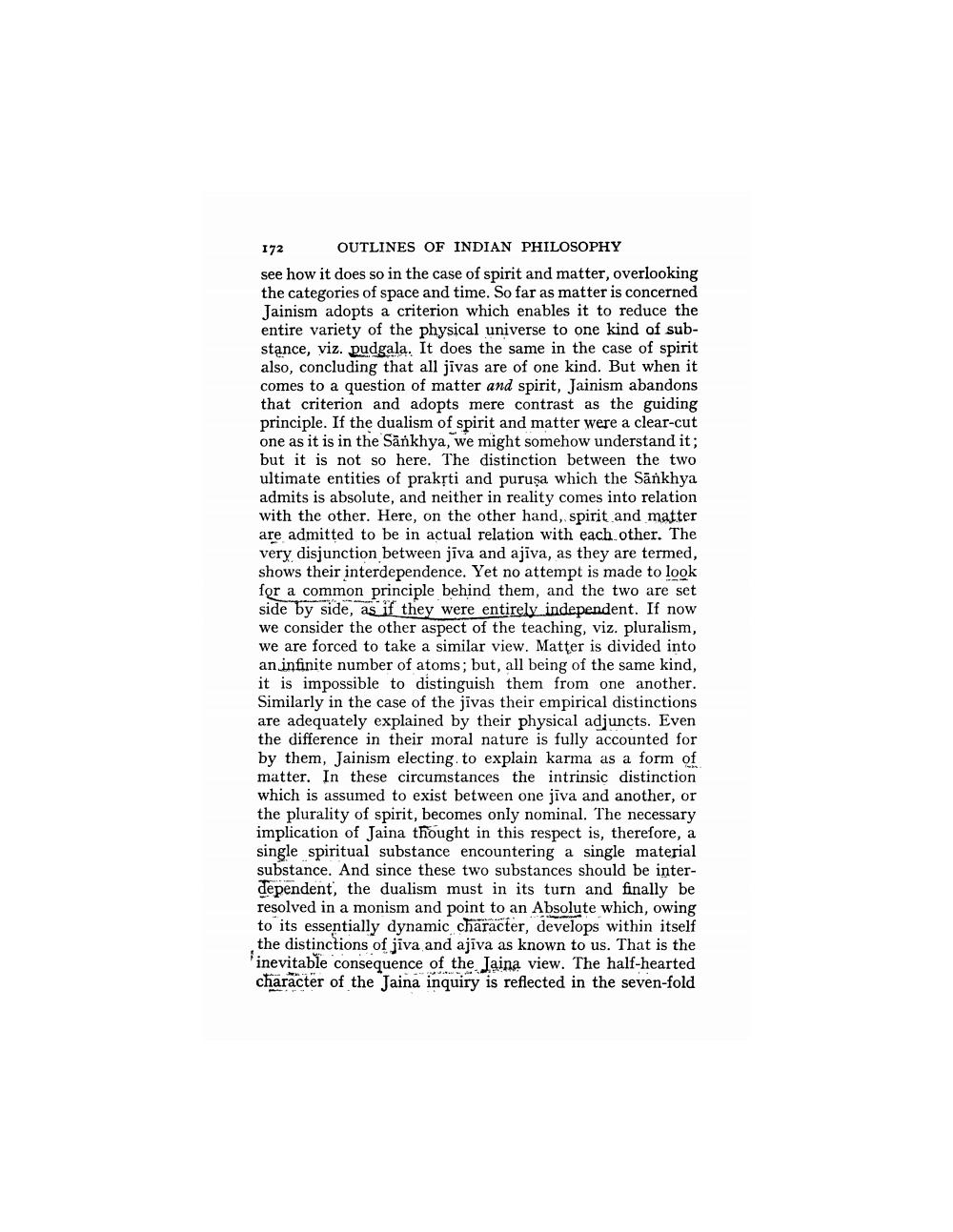________________
172
OUTLINES OF INDIAN PHILOSOPHY
see how it does so in the case of spirit and matter, overlooking the categories of space and time. So far as matter is concerned Jainism adopts a criterion which enables it to reduce the entire variety of the physical universe to one kind of substance, viz. pudgala. It does the same in the case of spirit also, concluding that all jivas are of one kind. But when it comes to a question of matter and spirit, Jainism abandons that criterion and adopts mere contrast as the guiding principle. If the dualism of spirit and matter were a clear-cut one as it is in the Sankhya, we might somehow understand it; but it is not so here. The distinction between the two ultimate entities of prakṛti and puruşa which the Sankhya admits is absolute, and neither in reality comes into relation with the other. Here, on the other hand, spirit and matter are admitted to be in actual relation with each other. The very disjunction between jiva and ajiva, as they are termed, shows their interdependence. Yet no attempt is made to look for a common principle behind them, and the two are set side by side, as if they were entirely independent. If now we consider the other aspect of the teaching, viz. pluralism, we are forced to take a similar view. Matter is divided into an infinite number of atoms; but, all being of the same kind, it is impossible to distinguish them from one another. Similarly in the case of the jivas their empirical distinctions are adequately explained by their physical adjuncts. Even the difference in their moral nature is fully accounted for by them, Jainism electing to explain karma as a form of matter. In these circumstances the intrinsic distinction which is assumed to exist between one jiva and another, or the plurality of spirit, becomes only nominal. The necessary implication of Jaina thought in this respect is, therefore, a single spiritual substance encountering a single material substance. And since these two substances should be interdependent, the dualism must in its turn and finally be resolved in a monism and point to an Absolute which, owing to its essentially dynamic character, develops within itself the distinctions of jiva and ajiva as known to us. That is the 'inevitable consequence of the Jaina view. The half-hearted character of the Jaina inquiry is reflected in the seven-fold




